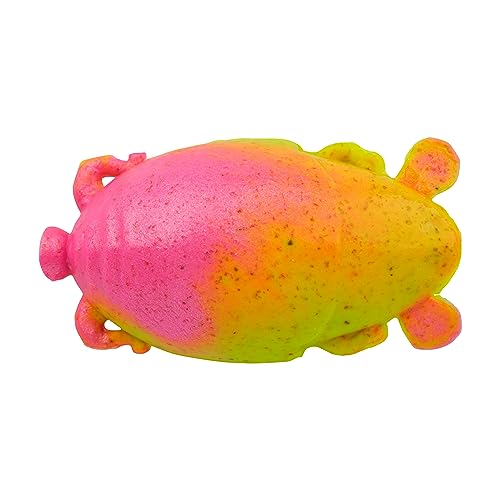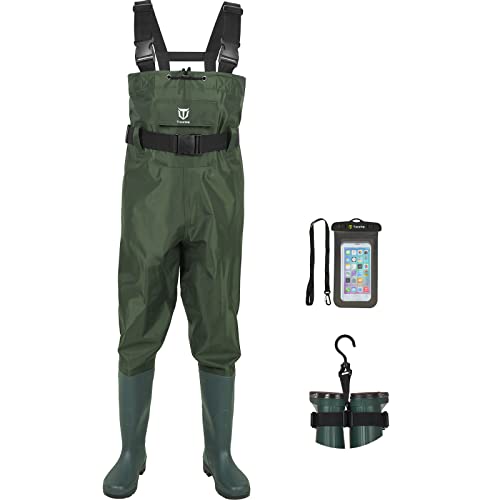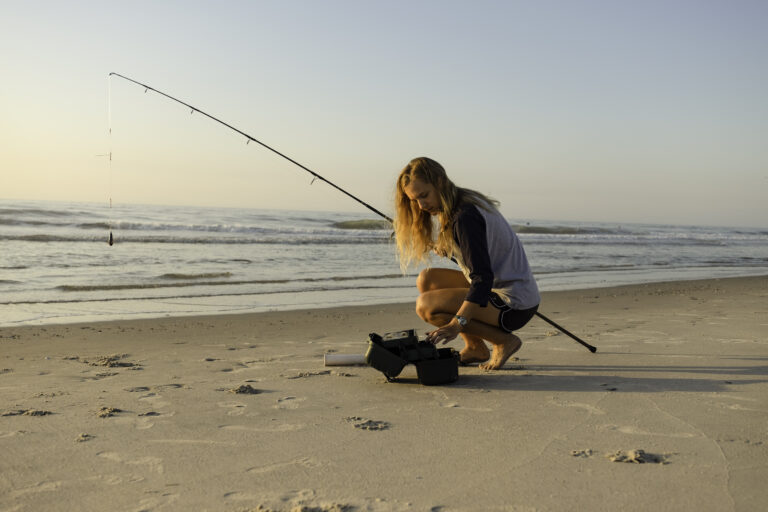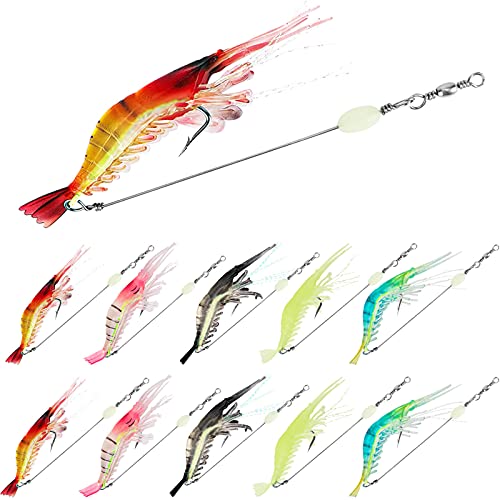To choose the right surf fishing line, consider the fishing conditions, target species, and your personal preferences. Surf fishing lines should be strong enough to withstand the waves and the weight of the fish you plan to catch while remaining sensitive to detect bites.
Additionally, the line’s visibility in the water and its casting abilities are important factors to consider. By taking these factors into account, you can select a surf fishing line that suits your needs and enhances your fishing experience.
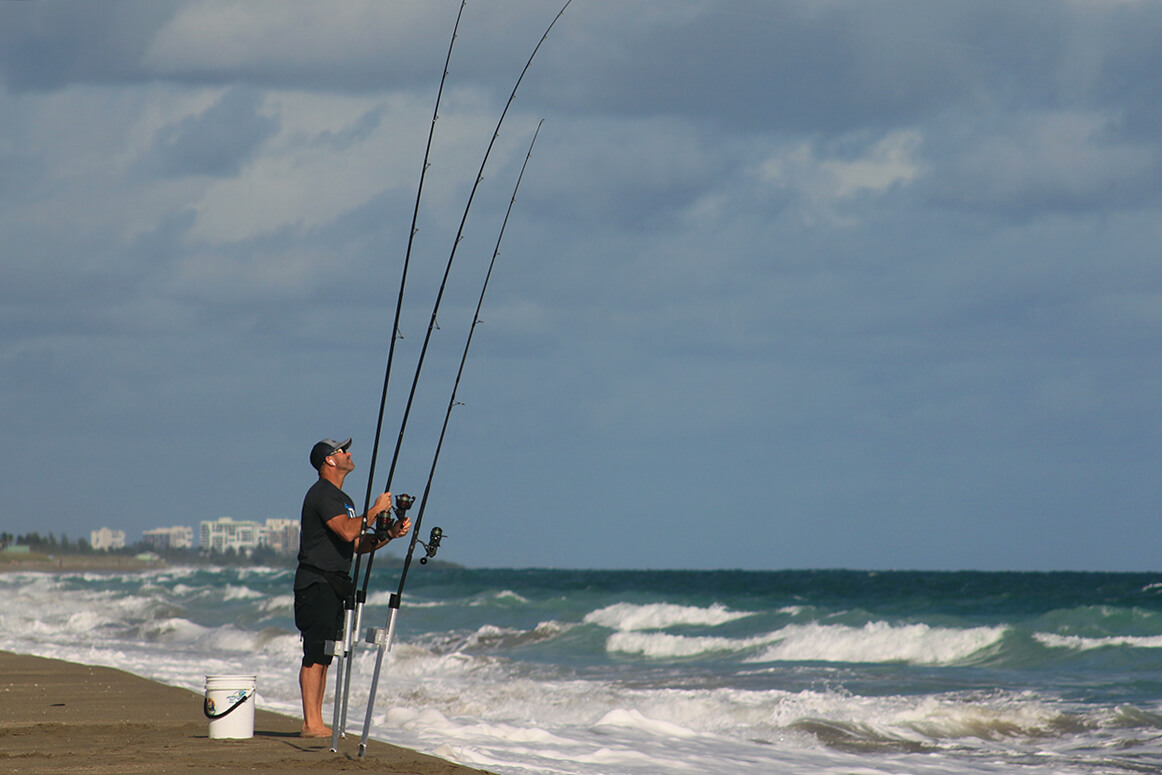
Credit: www.floridasportsman.com
Introduction: Surf Fishing Line Selection Basics
Surf fishing can be an exciting and rewarding experience, but it’s important to have the right gear, including the right fishing line. Choosing the correct surf fishing line is crucial because it can make a significant difference in your fishing success.
In this section, we will discuss the importance of selecting the right surf fishing line and the factors you should consider when making your choice.
Importance Of Selecting The Right Surf Fishing Line
The fishing line is the direct link between you and the fish, so choosing the right one is essential. Here are a few reasons why selecting the appropriate surf fishing line is important:
- Strength and durability: The surf can be a challenging environment for fishing, with strong currents and abrasive surfaces. Your fishing line needs to be strong enough to withstand the force of large fish and tough enough to resist breakage against rocks or other underwater obstacles.
- Casting distance: Surf fishing often requires long casts to reach fish that are farther from the shoreline. The right fishing line can provide you with the necessary strength and flexibility to achieve greater casting distance, allowing you to reach those elusive fish.
- Sensitivity: When surf fishing, you need to feel even the subtlest bites or movements from the fish. A good fishing line with high sensitivity will transmit these signals effectively to your fishing rod, enabling you to detect bites and hook fish more easily.
- Visibility: In certain situations, visibility can play a significant role in attracting fish or avoiding spooking them. Some fishing lines are designed with high visibility, making it easier for you to track and monitor the line’s position in the water.
- Line capacity: Surf fishing often requires thick lines to handle bigger and stronger fish. Choosing a fishing line with adequate line capacity ensures that you have enough line on your reel to handle the fish you’re targeting.
Factors To Consider When Choosing A Surf Fishing Line
Several factors should be taken into consideration when selecting a surf fishing line. Here are some key factors to keep in mind:
- Line strength: Consider the strength rating of the fishing line. A higher strength line is generally suitable for targeting larger fish, while lighter lines are more appropriate for smaller species.
- Material: Fishing lines can be made of various materials, including monofilament, fluorocarbon, and braided lines. Each material has its own advantages and disadvantages, so it’s important to choose one that suits your specific fishing style and target species.
- Visibility: Decide how visible you want your fishing line to be. Clear or low-visibility lines may be more appropriate for situations where fish are easily spooked, while high-visibility lines can help you track your line’s movement in turbulent waters.
- Abrasion resistance: Surf fishing often involves rough conditions, so the fishing line should be abrasion-resistant to withstand contact with rocks, shells, and other underwater structures.
- Casting ability: Consider the casting distance and ease of casting with the fishing line. Some lines are designed to have low memory and high castability, allowing for smooth and long-distance casts.
- Budget: Fishing lines come in various price ranges, so determine your budget and choose a line that offers good quality within your desired price range.
Selecting the right surf fishing line is crucial for a successful and enjoyable fishing experience. Take into account the factors discussed above to make an informed decision that suits your fishing needs. Remember, the fishing line is the crucial link connecting you to the fish, so choose wisely and increase your chances of hooking that big catch!
Understand Your Fishing Goals And Style
Assessing Your Fishing Needs And Preferences
When it comes to choosing the right surf fishing line, it’s important to first assess your fishing needs and preferences. Understanding what you’re looking for will help you make an informed decision that will enhance your fishing experience. Here are some key points to consider:
- Fishing location: Determine where you’ll be doing most of your surf fishing. Coastal areas with rocky shores may require a different type of line compared to sandy beaches. Take into account the conditions and the type of fish you’re targeting.
- Fish species: Consider the type and size of fish you typically catch or aim to catch. Different fish species have varying preferences when it comes to line strength and visibility. Opting for a line that suits your target species will increase your chances of success.
- Casting distance: If you’re looking to cast out long distances, you’ll need a line that offers good casting capabilities. Braided lines are known for their superior castability due to their thin diameter and low stretch. Mono or fluorocarbon lines, on the other hand, can be more suitable for shorter cast distances.
- Line strength: Determine the required line strength based on the size of fish you’ll be targeting. It’s essential to choose a line that can withstand the weight and fight of the fish without breaking. Keep in mind that larger fish will require a higher pound test line.
- Visibility: Consider the visibility of the fishing line in the water. Clear or low-visibility lines, such as fluorocarbon, can be advantageous when fishing in clear water or for species that are easily spooked. However, if you’re fishing in stained or murky water, a high-visibility line may be more appropriate.
- Budget: Assess your budgetary constraints and weigh them against your fishing needs. It’s important to find a balance between quality and affordability. While high-end lines may offer superior performance, there are also options available that provide good value for money.
Matching Your Line To Your Fishing Style
Once you have assessed your fishing needs and preferences, it’s time to match your line to your fishing style. This is an essential step that will optimize your surf fishing setup. Consider the following points:
- Braided lines: Braided lines are popular among surf anglers due to their high strength and low stretch properties. They offer excellent sensitivity, allowing you to feel even the slightest nibble. Braided lines are ideal for long-distance casting and can handle heavy loads, making them suitable for targeting larger fish.
- Monofilament lines: Monofilament lines are versatile and offer a good balance between strength, sensitivity, and affordability. They have a higher stretch compared to braided lines, which can be advantageous when fighting fish with vigorous head shakes. Monofilament lines also provide good knot strength and are less prone to tangles.
- Fluorocarbon lines: Fluorocarbon lines are virtually invisible underwater and have a similar refractive index to water. They are ideal for situations where fish are line-shy or the water is exceptionally clear. Fluorocarbon has low stretch and excellent abrasion resistance, making it suitable for fishing near structures or rocky areas.
- Backing line: Consider using a backing line for added capacity and to save costs on expensive main line. Braided lines are commonly used as backing due to their high strength and thin diameter. This allows you to utilize a shorter length of pricier monofilament or fluorocarbon line.
Remember, choosing the right surf fishing line involves evaluating your fishing needs, preferences, and fishing style. By assessing these factors and matching them to the appropriate line type, you’ll be well-equipped for an enjoyable and successful surf fishing adventure.
Consider Line Strength And Type
Understanding Fishing Line Strength And Its Significance
When it comes to surf fishing, choosing the right fishing line is crucial for a successful fishing experience. One of the key factors to consider is the strength of the fishing line. Understanding the significance of fishing line strength will help you make an informed decision.
Here are some key points to keep in mind:
- The strength of the fishing line refers to its ability to withstand tension and pressure. It is measured in pounds (lb) or kilograms (kg). Opting for a fishing line with appropriate strength is important to ensure it can handle the weight and resistance of the fish you are targeting.
- Choosing the right fishing line strength depends on various factors such as the size of the fish species you are targeting, the fishing conditions, and the casting distance you desire.
- If you are targeting larger fish species or fishing in rough conditions with strong currents, opt for a fishing line with higher strength to prevent breakage and increase your chances of landing the fish.
- On the other hand, if you are targeting smaller fish species or fishing in calmer waters, a fishing line with lower strength can suffice.
- It is crucial to strike the right balance between the fishing line strength and the size of the fish you are targeting. Using an excessively strong fishing line for smaller fish can decrease sensitivity, making it difficult to detect bites.
- Keep in mind that the fishing line strength also affects the casting distance. Thicker and stronger lines are usually heavier and may not cast as far as thinner lines. Consider the desired casting distance when selecting the fishing line strength.
Different Types Of Fishing Lines Suitable For Surf Fishing
When choosing a fishing line for surf fishing, it is essential to explore the different types available to find the most suitable one for your needs. Here are a few popular options to consider:
- Monofilament (mono) fishing line:
- Monofilament fishing lines are made from a single strand of nylon or similar synthetic materials.
- They are versatile and a popular choice among surf anglers due to their affordability and ease of use.
- Mono lines have good knot strength, low visibility in water, and moderate sensitivity.
- They come in various strengths and diameters, allowing you to choose according to your fishing requirements.
- Fluorocarbon fishing line:
- Fluorocarbon fishing lines are made from a more dense material known as polyvinylidene fluoride (pvdf).
- They have a higher refractive index, making them nearly invisible underwater.
- Fluorocarbon lines have excellent abrasion resistance and are resistant to uv rays, making them ideal for surf fishing.
- They also offer good sensitivity, allowing you to detect even the slightest bites.
- Braided fishing line:
- Braided fishing lines are made by interweaving multiple fibers like spectra or dyneema.
- They are known for their exceptional strength-to-diameter ratio, providing superior strength without sacrificing sensitivity.
- Braided lines have a small diameter, allowing for longer casts and better control over your fishing presentations.
- They have low stretch, which helps in detecting bites quickly and achieving a solid hookset.
Remember, the type of fishing line you choose for surf fishing depends on factors such as your fishing style, target species, and fishing conditions. Consider the unique characteristics of each fishing line type and match it to your specific needs to enhance your surf fishing experience.
Evaluate Line Diameter And Stretch
Surf fishing is an exciting and challenging way to catch fish from the shoreline. One essential factor in surf fishing is choosing the right fishing line. Evaluating the line diameter and stretch of a fishing line is crucial to optimize your casting distance, sensitivity, and overall fishing experience.
Impact Of Line Diameter On Casting Distance And Sensitivity
Choosing the appropriate line diameter is vital for maximizing your casting distance and enhancing sensitivity. Here are some key points to consider:
- Thinner lines have less air resistance, allowing for longer casts and greater accuracy.
- A smaller line diameter also results in better sensitivity, helping you detect subtle bites and changes in the water conditions.
- However, thinner lines may not be as strong as their thicker counterparts, making them more prone to breaking, especially when fighting larger fish.
- It’s important to strike a balance between line strength and diameter based on the fish species you intend to target.
Pros And Cons Of Low And High Stretch Fishing Lines
The stretch of a fishing line refers to its ability to elongate when under tension. Both low and high stretch lines have their advantages and drawbacks. Consider the following:
- Low stretch lines, also known as braided lines, offer several benefits. They have excellent sensitivity, providing anglers with a precise feel for bites and movements underwater. Braided lines also have a smaller diameter compared to their strength, allowing for increased line capacity on the reel. However, low stretch lines are more visible in the water and can be prone to wind knots. The lack of stretch also means less shock absorption, making it harder to handle hard-hitting and fast-swimming fish.
- On the other hand, high stretch lines, typically monofilament lines, have their own advantages. They provide better shock absorption, reducing the risk of your line snapping when a fish makes a sudden run. Monofilament lines also have some natural stretch, which can act as a shock absorber. Additionally, they are generally more affordable compared to braided lines. However, high stretch lines have lower sensitivity and may not transmit subtle movements and bites as effectively.
Evaluating line diameter and stretch is crucial when choosing the right surf fishing line. Thinner lines offer better casting distance and sensitivity, but might compromise on strength. Low stretch lines are highly sensitive but have lower shock absorption, while high stretch lines excel in absorbing shocks but have reduced sensitivity.
Consider the fishing conditions and target species to determine which combination of line diameter and stretch is most suitable for your surf fishing adventures. Happy fishing!
Assess Abrasion Resistance And Durability
Importance Of Selecting A Line With High Resistance To Abrasion
When it comes to surf fishing, the right fishing line can make all the difference. One important factor to consider is the line’s resistance to abrasion. The abrasive nature of sand, rocks, and other elements in a surf fishing environment can quickly damage a fishing line that lacks durability.
Here’s why selecting a line with high resistance to abrasion is crucial:
- Longer lifespan: A line with excellent abrasion resistance will last longer, saving you money in the long run. It can withstand the rough conditions of surf fishing without fraying or breaking easily.
- Enhanced performance: Fishing lines with high abrasion resistance maintain their integrity, ensuring smooth casting and efficient retrieval. You’ll experience fewer interruptions and increased fishing success.
- Protection against sharp objects: Surf fishing often involves fishing near rocks, jetties, or submerged structures. A line prone to abrasion can be easily cut by these sharp objects, resulting in lost catches. Opting for an abrasion-resistant line reduces the chances of line failure due to contact with such obstacles.
- Resistance to wear and tear: Surf fishing involves repetitive casting and retrieval, which puts stress on the line. An abrasion-resistant line is designed to withstand this wear and tear, ensuring optimal performance throughout your fishing session.
Durability Factors To Consider When Choosing A Surf Fishing Line
When selecting a surf fishing line, it’s crucial to consider its durability. A durable line can withstand the rigors of surf fishing and provide a reliable fishing experience. Here are some factors to keep in mind:
- Material: Different materials offer varying levels of durability. For example, monofilament lines are generally durable and resistant to uv rays, while braided lines are known for their high strength and resistance to abrasion.
- Pound-test rating: The pound-test rating indicates a line’s strength and ability to withstand pressure. Opt for a line with a higher pound-test rating for increased durability when fishing in surf conditions.
- Coating and treatments: Some fishing lines have protective coatings or treatments that enhance durability. Look for lines with specialized coatings that increase resistance to uv rays, saltwater corrosion, and abrasion.
- Knot strength: A durable line should also have excellent knot strength. A line with weak knot strength may result in lost fish or breakage when attempting to land larger species.
- Reviews and recommendations: Reading reviews and seeking recommendations from experienced surf anglers can provide insights into the durability of different fishing lines. Consider the experiences of others who have used the lines in similar surf fishing conditions.
By prioritizing abrasion resistance and considering the various durability factors mentioned above, you can choose a surf fishing line that meets your needs and enhances your fishing experience.
Analyze Line Visibility And Color
How Line Visibility Can Affect Your Fishing Success
When it comes to surf fishing, one crucial factor that can greatly impact your success is the visibility of your fishing line. The visibility of your line refers to how easily it can be seen by both you and the fish.
Choosing the right line visibility can make a significant difference in your ability to attract fish and land a catch. Here are the key points to consider:
- Clear or transparent lines: Clear or transparent fishing lines are excellent choices for clear water conditions. The advantage of using clear lines is that they are almost invisible underwater, making it less likely to spook wary fish. Additionally, clear lines offer excellent sensitivity, allowing you to detect even the slightest nibble.
- Colored lines: Colored fishing lines, on the other hand, can be advantageous in certain situations. Here are a few factors to consider when selecting the color of your surf fishing line:
- Water conditions: Assessing the water conditions is crucial when choosing the color of your fishing line. If the water is murky or stained, using a darker-colored line, such as green or brown, can help camouflage the line, making it less visible to fish. In clear water, lighter colors like clear, blue, or yellow can be effective.
- Fish species: Different fish species have different visual capabilities and preferences. Some fish, like bass, are less likely to be spooked by brightly colored lines, while others may have a higher sensitivity to line visibility. Consider the specific fish species you are targeting and adjust your line color accordingly.
- Lighting conditions: The amount of natural light present can influence line visibility. On bright and sunny days, a high-visibility line, such as yellow or chartreuse, can be advantageous for ensuring that you can see any line movement or subtle bites. In low light conditions, a darker line can help blend it with the surroundings.
Remember, selecting the right line visibility is critical for increasing your chances of hooking that prized catch. Assessing the water conditions, considering the fish species, and taking into account the lighting conditions can guide you in making an informed decision about the color of your surf fishing line.
Factor In Line Memory And Castability
When it comes to choosing the right surf fishing line, it’s essential to consider two crucial factors: line memory and castability. These factors can significantly impact your fishing experience and overall success on the water. Let’s take a closer look at the advantages and disadvantages of low and high line memory, as well as the key considerations for castability when selecting a surf fishing line.
Advantages And Disadvantages Of Low And High Line Memory
Low line memory:
- Reduced line coiling: Low memory lines have minimal coiling tendency, allowing for smoother, more efficient casts.
- Increased sensitivity: With less memory, you can feel even subtle bites and movements more effectively, giving you an edge in detecting fish activity.
- Easier line management: Low memory lines are less likely to tangle and twist, leading to less frustration during casting and retrieval.
- Disadvantages:
- Limited abrasion resistance: Low memory lines can be more prone to damage and abrasion when used in rough or rocky surf fishing conditions.
- Potential for reduced strength: The decreased coil memory can lead to a decrease in overall line strength, making it less suitable for battling larger fish.
High line memory:
- Enhanced line strength: High memory lines often have greater overall strength, making them better suited for targeting larger, more powerful fish species.
- Superior knot retention: Lines with higher memory tend to hold knots more effectively, ensuring secure connections between your mainline and leader.
- Increased durability: High memory lines often exhibit improved resistance to abrasion and wear, making them more suitable for challenging surf fishing environments.
- Disadvantages:
- Casting challenges: Increased line memory can result in more coiling and memory retention, making casting less smooth and efficient.
- Reduced sensitivity: With more memory, it can be more challenging to detect subtle bites and movements, potentially leading to missed opportunities.
Castability Considerations For Surf Fishing Lines
When choosing a surf fishing line, it’s crucial to factor in its castability. Here are some key considerations to keep in mind:
- Line diameter: Thinner lines offer less resistance and weight during casting, allowing for longer and more accurate casts.
- Type of line: Monofilament lines typically offer good castability due to their smoothness and low memory. Braided lines may require some adjustments in casting technique due to their higher memory and potentially thicker diameter.
- Line weight: Opting for the appropriate line weight that matches your rod and reel setup can optimize castability and ensure optimal performance.
- Line coating: Some lines may have specialized coatings that enhance casting distance and accuracy.
- Casting technique: Practice and experimentation with different casting techniques can help maximize castability with your specific surf fishing line.
Remember, the right balance between line memory and castability will depend on your fishing style, target species, and the specific conditions you encounter. By considering these factors and understanding the advantages and disadvantages of low and high line memory, as well as the key castability considerations, you’ll be equipped to choose the perfect surf fishing line for your needs.
Review Line Price And Budget
Balancing Quality And Affordability When Selecting A Surf Fishing Line
When it comes to choosing the right surf fishing line, finding the perfect balance between quality and affordability is crucial. You want a line that offers the durability and strength needed to handle the challenges of surf fishing, without breaking the bank.
Here are a few key points to consider when reviewing line price and budget:
- Quality vs price:
- While it can be tempting to opt for the cheapest fishing line available, remember that the quality of the line directly affects your fishing experience. A line that is too cheap may lack the necessary strength and could easily snap when reeling in large fish. Weigh the cost against the reliability and performance of the line before making a decision.
- Investing in a higher-quality line may come with a slightly higher price tag, but it can provide peace of mind and a longer lifespan, ultimately saving you money in the long run.
- Fishing conditions:
- Consider the specific conditions in which you’ll be surf fishing. If you regularly encounter rough surf or rocky areas, a more durable line is essential. A higher-priced line may offer better abrasion resistance and can withstand the demands of challenging environments.
- On the other hand, if you primarily fish in calm waters or are just starting out, a more affordable line may be suitable. Assess your fishing needs and choose accordingly.
- Line strength and diameter:
- The strength and diameter of the fishing line are crucial factors to consider. Higher pound-test lines tend to be thicker, adding more strength but potentially sacrificing castability. Thinner lines offer better casting distance but may not be able to handle as much weight or resist abrasion as effectively.
- Determine the type of fish you’ll typically be targeting and the weight range you’ll be working with. This will help you select a fishing line with the appropriate pound-test and diameter to meet your fishing needs.
- Brand reputation:
- Take into account the reputation and reviews of fishing line brands. Well-established brands often have a track record of producing reliable products. While you may find less expensive options from lesser-known brands, it’s important to consider their reliability and overall customer satisfaction.
- Budget:
- Set a budget for your fishing line and stick to it. Determine how much you are willing to spend and explore options within that range. Remember that fishing line is a crucial component of your gear, so it’s worth investing a reasonable amount to ensure a successful and enjoyable fishing experience.
Finding the right surf fishing line that strikes a balance between quality and affordability requires careful consideration of factors such as line strength, fishing conditions, brand reputation, and your budget. By evaluating these aspects, you can make an informed decision and enjoy a fruitful surf fishing expedition without breaking the bank.
Conclusion: Expert Tips For Choosing The Perfect Surf Fishing Line
Importance Of Selecting The Right Line For Successful Surf Fishing
Choosing the right line for surf fishing is vital for a successful angling experience. A suitable fishing line can make all the difference between landing that prized catch or coming back empty-handed. Here’s why selecting the right line is crucial:
- Strength and durability: Surf fishing often involves casting into strong waves, which puts a lot of strain on the line. Opting for a line with adequate tensile strength will help withstand the force of the waves and prevent breakage.
- Abrasion resistance: The surf environment can be harsh, with rocks, sand, and debris potentially damaging the line. Look for lines with a high abrasion resistance rating to ensure they can withstand the rough conditions and retain their strength.
- Castability: Long, accurate casts are essential for reaching fish in the surf zone. Certain types of fishing line, such as braided lines, offer excellent castability, allowing you to cover more ground and increase your chances of landing a catch.
- Sensitivity and control: Surf fishing requires detecting subtle bites and maintaining control over the line in turbulent waters. Lines with high sensitivity enable anglers to detect even the slightest nibble, while good control allows for efficient manipulation and reeling in of fish.
- Stealth: Fish in the surf can be easily spooked by visible lines, causing them to swim away. Opt for lines that have a low visibility color, such as clear or green, to minimize the chances of fish being frightened off.
Recap Of The Key Factors To Consider In The Selection Process
To summarize, here are the key factors to consider when choosing the perfect surf fishing line:
- Tensile strength: Ensure the line can handle the force of the surf without breaking.
- Abrasion resistance: Look for lines that can withstand the harsh surf environment.
- Castability: Opt for lines that offer excellent casting distance and accuracy.
- Sensitivity and control: Choose lines that provide good sensitivity and control for detecting bites and managing the line in turbulent waters.
- Stealth: Select lines with low visibility to avoid spooking fish.
By keeping these important factors in mind, you’ll be well-equipped to make an informed decision when selecting the ideal surf fishing line. Remember to choose a line that suits your fishing style and target species, as different lines have varying characteristics that can cater to specific needs.
Happy surf fishing!
Conclusion
Understanding the importance of choosing the right surf fishing line is crucial for any angler. Your line can make or break your fishing success in these coastal waters. By considering factors such as strength, durability, and visibility, you can easily narrow down your options.
Mono and braided lines each have their own advantages and disadvantages, so it’s essential to understand their characteristics before making a decision. Additionally, selecting the appropriate pound test based on your target species and fishing conditions is crucial. Furthermore, considering the diameter and color of the line can greatly impact your fishing experience.
Remember to match your line with the appropriate reel size for optimal performance. By following these guidelines, you can ensure a successful and enjoyable surf fishing experience. So go ahead and hit the waves armed with the right surf fishing line, and let the adventure begin!

